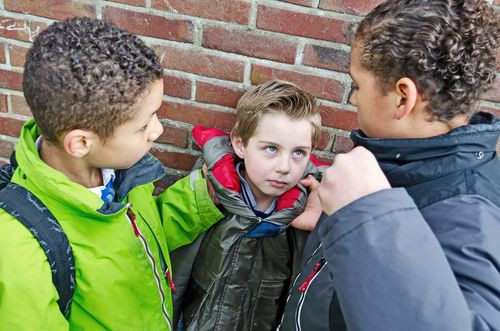Bullying And Assault Send 90,000 Kids To ER Each Year, Comprise 10% Of All Injuries Sustained At School

Each year, some 90,000 students sustain injuries at school as a result of other students deliberately trying to hurt them, according to a new forthcoming study in Pediatrics. Of the total estimated population of injuries suffered at school that required ER treatment, bullying and assault made up roughly one in 10 cases.
This rate may seem low, given how much national attention is focused on school shootings and bullying prevention efforts. But physical violence makes up the minority, with accidental trips, falls, cuts, and scrapes comprising the bulk of physical injuries, at 40 percent. Though the research has its limits — no mention is made of where the trend is headed or how to prevent it from growing — experts say there is much to glean from parsing through the data.
“[The number of injuries] appears to be concerningly high,” study leader, Dr. Siraj Amanullah, an assistant professor of emergency medicine and pediatrics at Brown University’s Alpert Medical School, told HealthDay, “especially when you realize that such a substantial number of injuries are occurring in the school setting, where safety measures are already in place.”
Amanullah and his team looked at the ER visits at 66 hospitals over the course of eight years, between 2001 and 2008. They extrapolated their findings to a nationwide level, landing on an estimated total of 7 million visits. Of those, approximately 700,000 were the result of deliberate action, either between groups of students, parents and police officers and students, or a lone student’s choice to self-harm. The team averaged 92,000 ER visits per year over the study period, 96 percent of which were between groups of students. This gave the researchers an overall total of 88,000 deliberate injuries sustained per year as a result of bullying and assault.
Amanullah calls for “culturally appropriate preventive strategies” in order to combat the small but dangerous minority. Indeed, one in 10 is tiny, but Amanullah urges people to consider the supreme power of fear in influencing how children interact with one another. Intervention strategies must take place both in school and at home if parents wish to expect a certain degree of safety while they’re away from their kids eight hours each day.
"Parents and physicians need to talk to children about violence and bullying in and out of school, and try to address the issue at various levels just like prevention efforts for any other medical illness," he explained.
Admittedly, parent involvement becomes more difficult as kids age, something the researchers referenced as a motivation to begin talks with kids early. Steering them down healthy paths, both physically and mentally, helps prepare them for positive decisions once they reach more formidable ages. Karen Liller, a professor at the University of South Florida who studies injuries in children, commented on the study saying while it may provide helpful data, it lacks concrete tools with which to implement that data.
“This precludes any detailed recommendation for tailored interventions,” she told HealthDay.
What’s more, the data looked only at emergency room visits. The number of kids who were bullied and visited their family doctors, received treatment from a school nurse, or simply asked Mom or Dad to take care of them, remains unknown.
"As parents, guardians, teachers and physicians,” Amanullah told Live Science, “we need to take an extra moment to talk to children about bullying and its consequences.”
Published by Medicaldaily.com



























